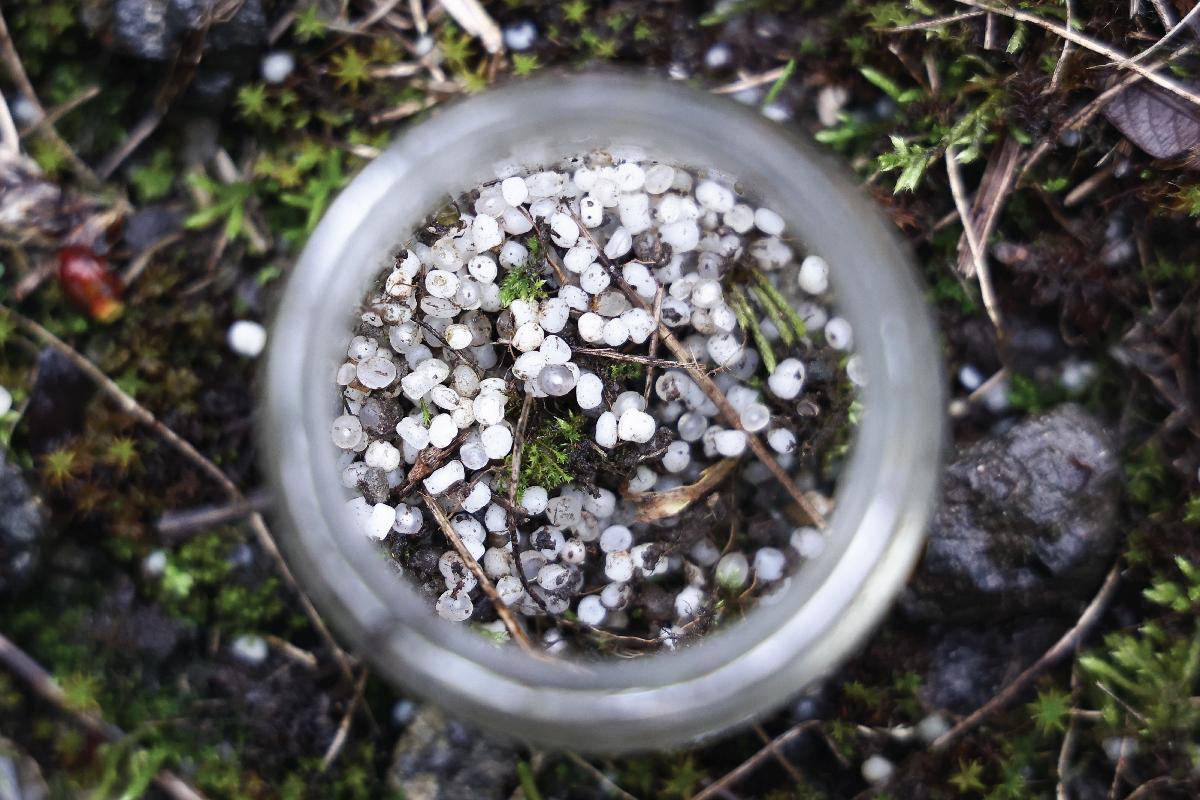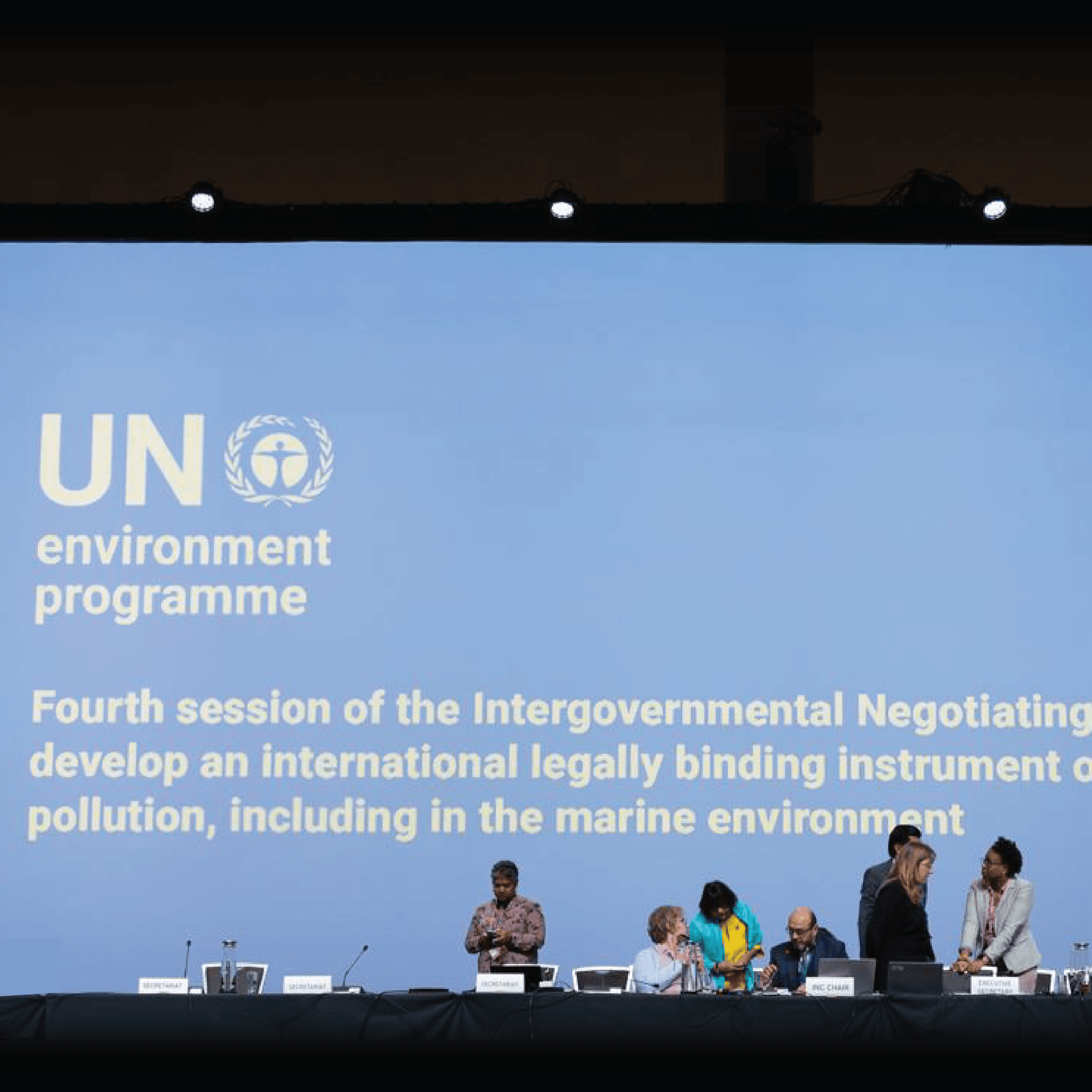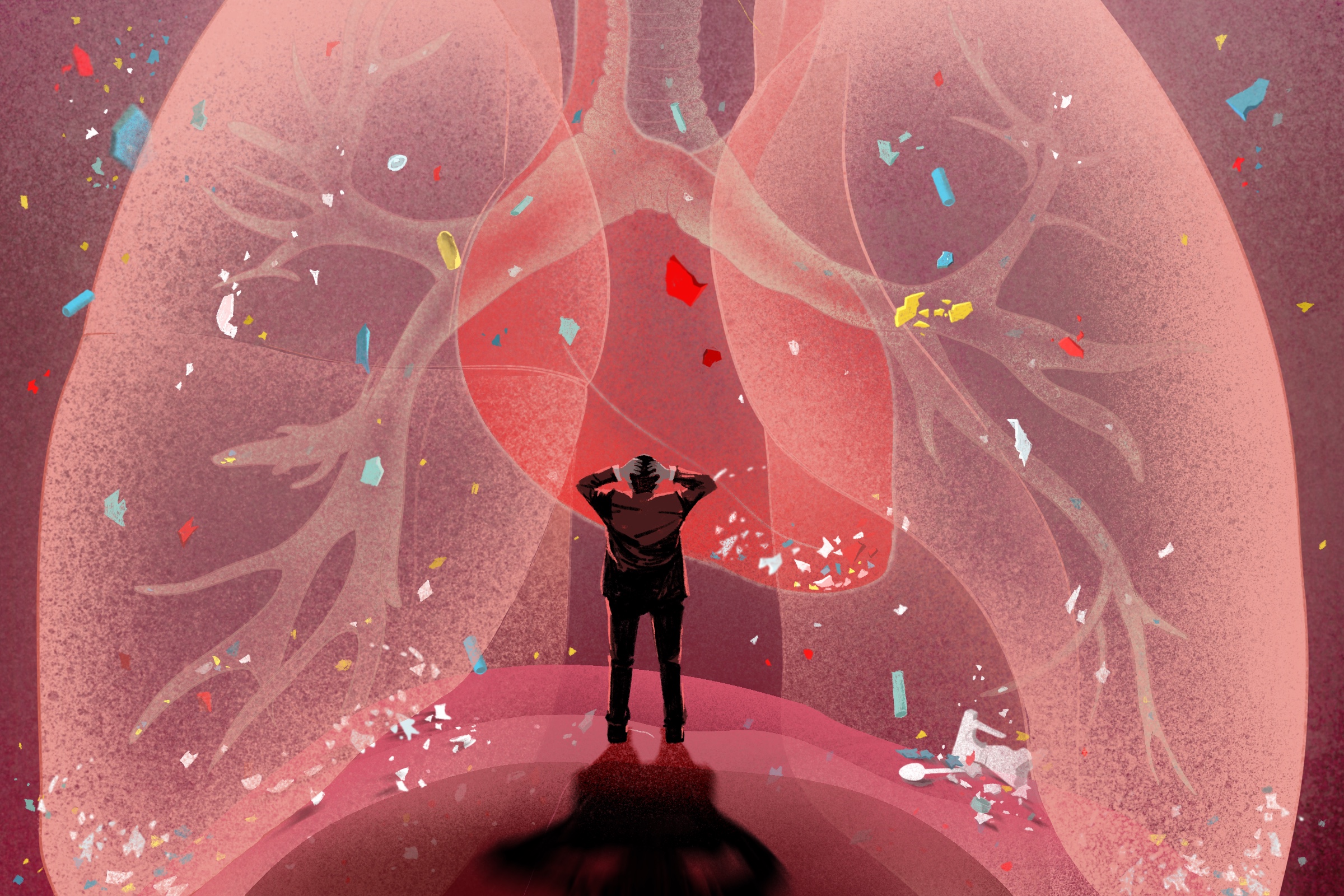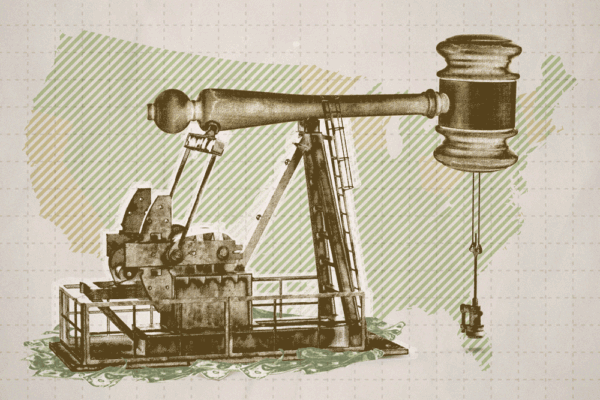Plastic pollution threatens everything from sea animals to human beings, a problem scientists, activists, business groups, and politicians are debating as they draft a global treaty to end plastic pollution. These negotiations have only highlighted the complexity of a threat that seems to pit economic growth and jobs against catastrophic damage to people and the planet.
Inescapable Problem
While plastic doesn’t biodegrade—at least not in a reasonable time frame—it does break down into ever smaller particles. We may no longer see it, but plastic constantly accumulates in our environment. These microscopic bits, known as microplastics and nanoplastics, can enter our bodies through what we eat, drink, and breathe.
Plastic pollution is a chemical remnant of petroleum with other chemicals added in to change the durability, elasticity, and color. PlastChem Project has cataloged more than 16,000 chemicals—4,200 considered highly hazardous, according to the initiative’s report issued in March.
The astounding level and types of plastics, many with unknown health effects, should be a wakeup call for everyone, Erin Smith, vice president and head of plastic waste and business at the World Wildlife Fund (WWF), told The Epoch Times.
“Plastic pollution is absolutely everywhere,” she said. “What’s hard right now is the body of science, trying to understand what the presence of plastic inside us means from a human health perspective, is still new.”
Reproductive and Neurological Issues
Newer human health studies have shown plastic has far-reaching effects.“The research is clear: Plastics cause disease, disability, and death. They cause premature birth, low birth weight, and stillbirth as well as leukemia, lymphoma, brain cancer, liver cancer, heart disease and stroke. Infants, children, pregnant women, and plastics workers are the people at greatest risk of these harms. These diseases result in annual economic costs of $1.2 trillion,” said Dr. Phil Landrigan, pediatrician and environmental health expert, in a Beyond Plastics news release in March.
Beyond Plastics, an advocacy group for policy change, warns that new research indicates plastic could be leading to an increased risk of heart disease, stroke, and death.
Successive studies have found microscopic plastic particles affect every system of our bodies and at every age.
“The prevalence of estrogenic compounds in plastics raises health concerns due to their potential to disrupt the endocrine system, which can, among others, result in developmental and reproductive issues, and an elevated risk of hormone-related cancers, such as breast and prostate cancer,” the authors noted.

The full scope of these chemical consequences is far from known. According to Minderoo, less than 30 percent of more than 1,500 plastics chemicals have been investigated for human health impacts. That includes the “substitution” chemicals used to replace additives that were restricted after being found problematic.
Absorbed Into Arteries and Skin
The relatively recent discovery that plastic particles can make their way into the human body through multiple methods has come with other unsetting insights. Microplastics and nanoplastics in human artery wall plaque were recently linked to a 350 percent increased risk of heart attack, stroke, and death.

Polyethylene is the most common plastic found in bottles and bags, including cereal box liners. Polyvinyl chloride, better known as PVC, is another common plastic, often used in medical and construction materials.
Sweaty skin was found to be especially prone to absorbing the particles.
Once inside the body, plastic can mimic hormones, collect in arteries, and contribute to one of the most common disease pathologies today—an imbalance of free radicals and antioxidants known as oxidative stress.
Dr. Bradley Bale, a heart attack and stroke prevention specialist and co-author of “Beat The Heart Attack Gene,” told The Epoch Times there’s plenty of evidence that plastic is causing oxidative stress.
“Plastics are ubiquitous on planet Earth,” Dr. Bale said. “You’re crazy to think you can eliminate your exposure to that. It would be next to impossible. But we can look at other issues that cause oxidative stress.”

Those other issues, including poor diet and other toxic exposures, may be resolved through lifestyle approaches, supplements, or avoidance.
How to Stop the Plastic Onslaught
Since cleaning up plastic is nearly impossible once it breaks down, advocacy groups are pushing for legislation that would reduce single-use products such as food wrappers, bottles, takeout containers, and bags—some of the most prolific and problematic plastics.The United Nations Environment Programme, a global environmental decision-making body with representatives from all UN member states, decided in March 2022 that the plastics issue needed a coordinated response. It committed to fast-tracking a treaty meant to address the world’s growing plastic problem.



The Economics of Plastics
Plastics are important for many businesses and the plastics industry itself is significant and influential. However, plastics aren’t as profitable as one may expect. New plastic facilities often get subsidies and tax breaks that make plastics artificially cheap to produce. These financial supports have increased substantially in the past three years.Some organizations question whether these incentives are beneficial to local economies and taxpayers as a whole.
“Since the project’s inception, industry executives and government officials alike have argued that it would spur local economic growth and renewed business investment. Yet prosperity still has not arrived. Beaver County has seen a declining population, zero growth in GDP, zero growth in jobs, lackluster progress in reducing poverty, and zero growth in businesses—even when factoring in all the temporary construction workers at the site,” the report says.

Conflicted Solutions for a Plastic World
The Plastics Industry Association argues that plastic “makes the world a better place”—language it wants in the plastics treaty.The association represents more than one million workers throughout the entire supply chain. A $468 billion industry, plastics are the sixth largest U.S. manufacturer, according to the association, which did not respond to The Epoch Time’s requests for an interview.
David Zaruk, a communications professor in Belgium with a doctorate in philosophy, told The Epoch Times opposition to plastic is largely an attack on the fossil fuel industry—part of a larger “anti-capitalist political agenda.” The value of plastic on society, he said, is frequently understated.
The U.S. Plastics Pact—a collaboration of more than 100 businesses, nonprofit organizations, government agencies, and academic institutions initiated by The Recycling Partnership and World Wildlife Fund—identified 11 problematic plastics that its members aim to voluntarily eliminate by 2025. Members include major plastics users and the products are all finished items or components of plastics that either aren’t recycled or cause problems in the recycling system and could be eliminated or replaced.
Recycled Mystery Chemicals
Unfortunately, recycling isn’t a perfect solution to the plastic problem. Recycled plastics present additional hazards because they are made from a blend of products and a more uncertain chemical makeup, according to Therese Karlsson, science advisor for the International Pollutants Elimination Network, a global consortium of public interest groups.
“We’ve looked a lot at recycled plastics. There you have a lot of different plastic materials that you don’t know what they contain and you combine that into a new plastic material that you have even less information about what it contains,” Ms. Karlsson told The Epoch Times. “As a consumer, you can’t look at a piece of plastic to figure out if it’s safe or not. We just don’t know, but we know a lot of the chemicals used in plastic are toxic.”
Little Changes Make a Big Difference
In the absence of government intervention, Ms. Smith said there are some easy tips consumers can take to limit their own plastic exposure:- Shop with reusable shopping bags.
- Don’t use plastic in the microwave or dishwasher because heat can release additional polymers.
- Buy metal or glass snack containers to replace sealable plastic bags.
- Use beeswax cloth in place of plastic wrap.
- Replace dryer sheets with wool balls.
- Carry a refillable cup for water and coffee.
- Consider reusable trash bags.
- Use and carry metal straws, stir sticks, and/or reusable cutlery.
- Don’t litter, and pick up trash you find outdoors.














